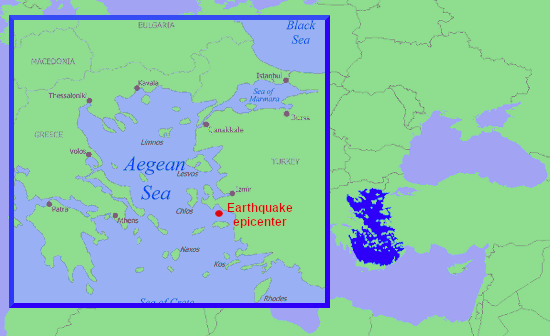
Circle the area on this map

A. Greece controls the vast majority of the Aegean Islands including many like Samos that lie very close to Turkey’s mainland coast. The two NATO allies have come close to hostilities twice in disputes over territorial waters, national airspace and exclusive economic zones.
C. Over the weekend, rescue workers continued searching through the rubble in Izmir, a city of nearly 3 million. Like Smyrna, Athens, Byzantium and Sparta were ancient city states. Athens is now the capital of Greece. Byzantium is now Istanbul, Turkey’s largest city. Modern Sparta was rebuilt on the ancient site in Greece.
A. The much smaller Anatolian and Aegean tectonic plates are caught in the center of the larger Eurasian, African and Arabian plates. As these plates push under or over each other over millions of years they trigger earthquakes and volcanoes.
B. In the 17th and 18th centuries, the Ottomans ruled much of Southeastern, Central and Eastern Europe, Western Asia and Northern Africa. The Greeks rebelled against Turkish rule in the 1800s and regained control of the Aegean Islands in World War I when the Ottomans were defeated and modern Turkey was created.